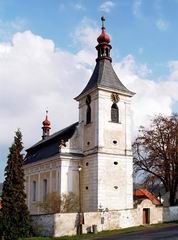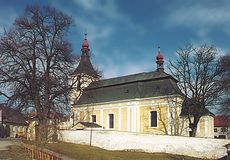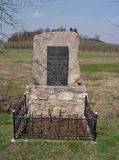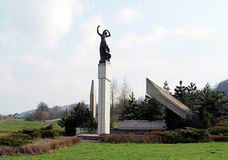
The village Vitějovice is situated about 6 km north-east of the town Prachatice in the valley of the Zlatý Potok (Golden Stream), 720 m a.s.l. It is a well-known place of the meeting of five armies at the end of the Second World War.
The village is first mentioned in 1283. Another mention originates from 1315, when brothers Verner, Racek and Přibík of Vitějovice owned it. In 1317 it was already a part of the domain of Bavorov. Later it became a part of domain of Helfenburk castle and then of the village Libějovice.
The dominant feature of Vitějovice is the Baroque St. Margaret's Church, which was built between 1743 - 1746 in the small square.
Several houses from the 17th century with traits of the so-called rural South Bohemian Baroque can be seen in the village as well.
The monument, which stands north of the village on the crossing of the road between the towns Husinec and Netolice and the road to Vitějovice, was built in the place of the meeting of five armies at the end of the Second World War. On 9th May 1945 the Americans stopped the fleeing soldiers of the German and Hungarian armies. The prisoners were committed to the Czech Army and then to the Soviet Army (on 13th May 1945).
 |
 |
 |
The hill called Osule with remains of the castle of the same name looms above the village.
Traces of the Slavonic burial mounds from the 9th - 10th centuries are on the edge of the forest about 1.5 km south-west of Vitějovice.
Remains (placers) of the medieval gold washing can be see along the Zlatý Potok stream.